Thanks! I tried an initial exploration but ran into stability issues, so for now it's future work
28.04.2025 06:33 — 👍 0 🔁 0 💬 0 📌 0TimDarcet
@timdarcet.bsky.social
PhD student, SSL for vision @ MetaAI & INRIA tim.darcet.fr
@timdarcet.bsky.social
PhD student, SSL for vision @ MetaAI & INRIA tim.darcet.fr
Thanks! I tried an initial exploration but ran into stability issues, so for now it's future work
28.04.2025 06:33 — 👍 0 🔁 0 💬 0 📌 0Haha yeah it kinda looks like paying respects
17.02.2025 10:25 — 👍 0 🔁 0 💬 1 📌 0Thanks!
17.02.2025 10:24 — 👍 0 🔁 0 💬 0 📌 0Basically there are p prototypes, at each batch there are n samples (patch tokens). You assign samples to prototypes via a simple dot product and you push prototypes slightly towards their assigned samples.
To prevent empty clusters we use a Sinkhorn-Knopp like in SwAV
Hi! It's a custom process, very similar to the heads of DINO and SwAV.
The idea is to cluster the whole distribution of model outputs (not a single sample or batch) with an online process that is slightly updated after each iteration (like a mini-batch k-means)
Thanks a lot!
17.02.2025 10:15 — 👍 0 🔁 0 💬 0 📌 0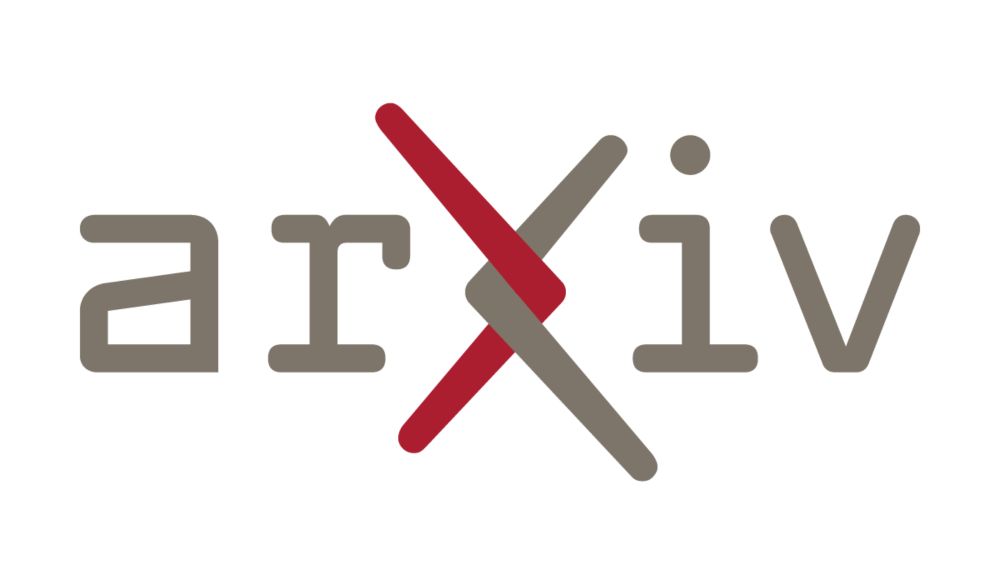
ArXiv: arxiv.org/abs/2502.08769
Github: github.com/facebookrese...
As always thank you to all the people who helped me, Federico Baldassarre, Maxime Oquab, @jmairal.bsky.social , Piotr Bojanowski
With this third paper I’m wrapping up my PhD. An amazing journey, thanks to the excellent advisors and colleagues!
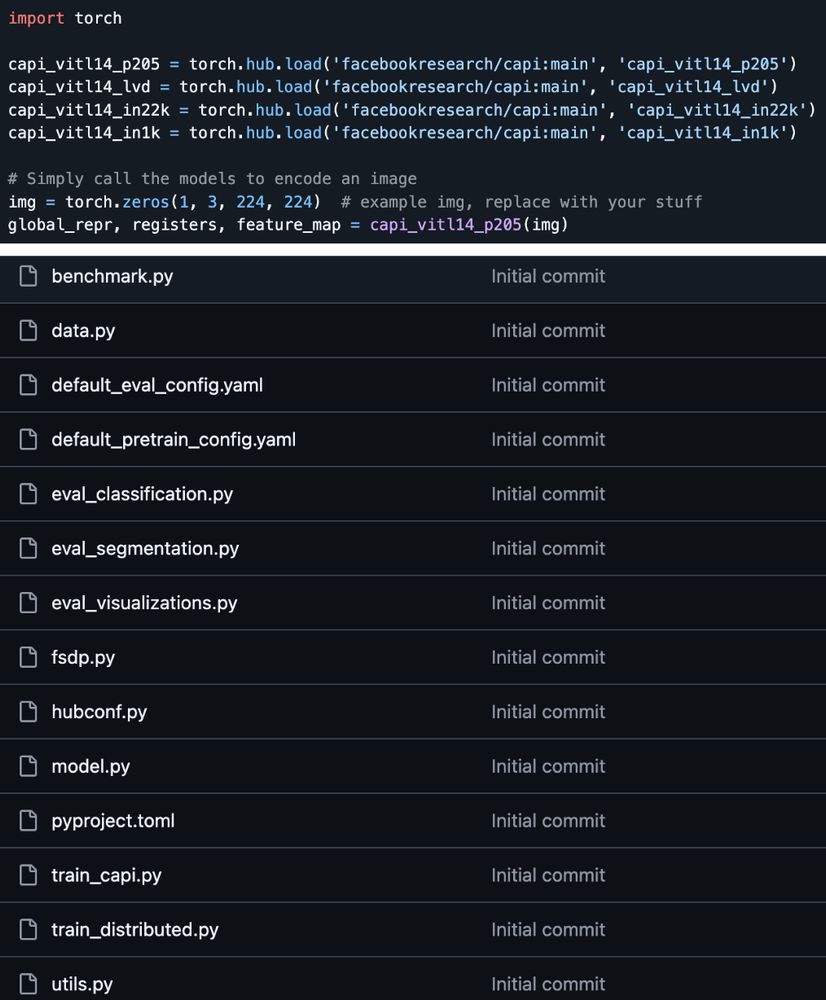
Code and weights are Apache2 so don’t hesitate to try it out!
If you have torch you can load the models in a single line anywhere
The repo is a flat folder of like 10 files, it should be pretty readable
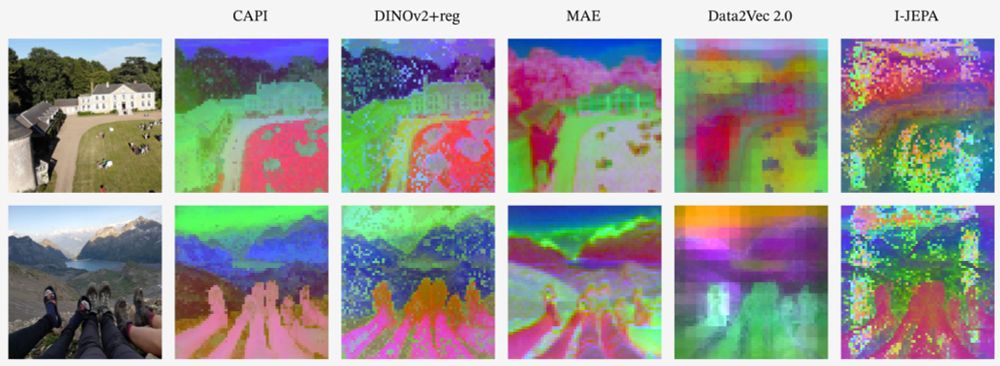
Qualitatively the features are pretty good imo
DINOv2+reg still has artifacts (despite my best efforts), while the MAE features are mostly color, not semantics (see shadow in the first image, or rightmost legs in the second)
CAPI has both semantic and smooth feature maps
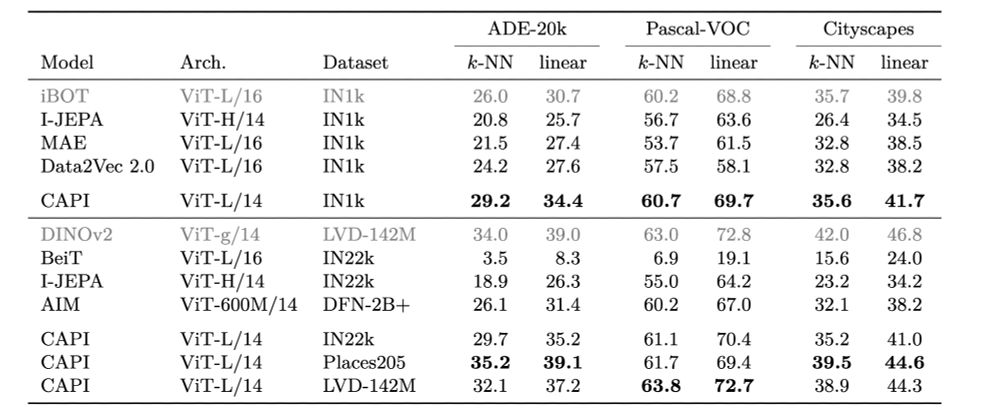
But segmentation is where CAPI really shines: it even beats DINOv2+reg in some cases, esp. on k-nn segmentation
Compared to baselines, again, it’s quite good, with eg +8 points compared to MAE trained on the same dataset
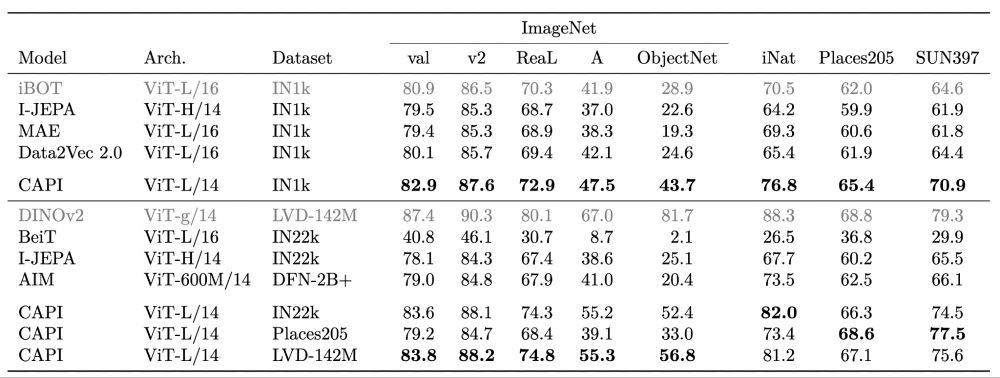
We test 2 dataset settings: “pretrain on ImageNet1k”, and “pretrain on bigger datasets”
In both we significantly improve over previous models
Training on a Places205, is better for scenes (P205, SUN) but worse for object-centric
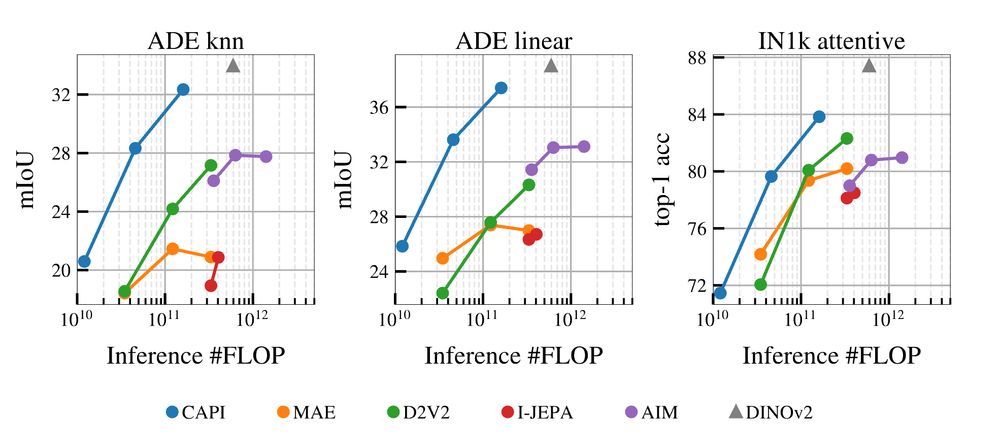
Enough talk, we want numbers. I think they are really good! CAPI is not beating DINOv2+reg yet, but it sounds possible now. it closes most of the 4-points gap between previous MIM and DINOv2+reg, w/ encouraging scaling trends.
14.02.2025 18:04 — 👍 4 🔁 0 💬 2 📌 0
Plenty of other ablations, have fun absorbing the signal. Also the registers are crucial, since we use our own feature maps as targets, so we really don’t want artifacts.
14.02.2025 18:04 — 👍 3 🔁 0 💬 1 📌 0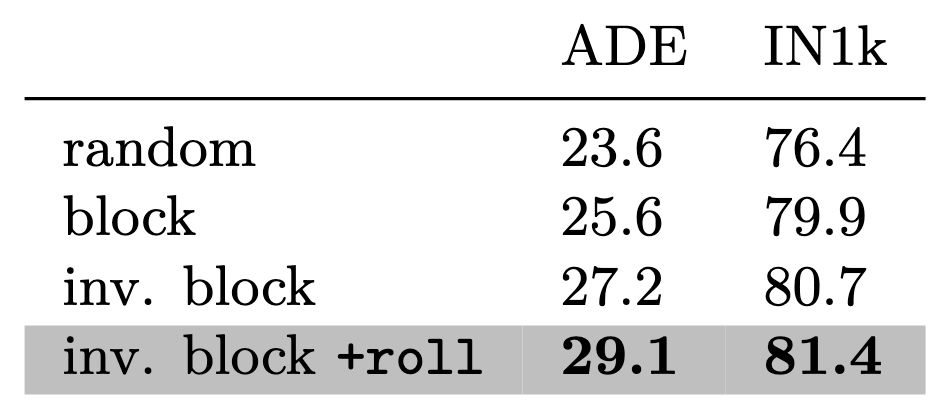
Masking strategy: it makes a big diff.
“Inverse block” > “block” > “random”
*But* w/ inv. block, you will oversample the center to be masked out
→we propose a random circular shift (torch.roll). Prevents that, gives us a good boost.

In practice, cross-attn works really well. Not mentioned in the table is that the cross-attn predictor is 18% faster than the self-attn predictor, and 44% faster than the fused one, so that’s a sweet bonus.
14.02.2025 18:04 — 👍 3 🔁 0 💬 1 📌 0
3. Pred arch?
fused (a): 1 transformer w/ all tokens
split (b): enc w/ no [MSK], pred w/ all tokens
cross (c): no patch tokens in pred, cross-attend to them
Patch tokens are the encoder’s problem, [MSK] are the predictor’s problem. Tidy. Good.
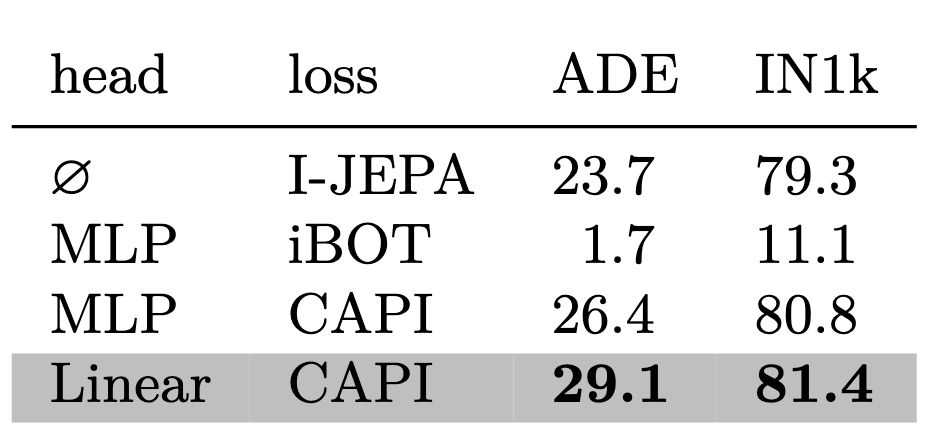
Empirically: using a direct loss is weaker, the iBOT loss does not work alone, using a linear student head to predict the CAPI targets works better than a MLP head.
So we use exactly that.

2. Loss?
“DINO head”: good results, too unstable
Idea: preds and targets have diff. distribs, so EMA head does not work on targets → need to separate the 2 heads
So we just use a clustering on the target side instead, and it works

1. target representation
MAE used raw pixels, BeiT a VQ-VAE. It works, it’s stable. But not good enough.
We use the model we are currently training. Promising (iBOT, D2V2), but super unstable. We do it not because it is easy but because it is hard etc
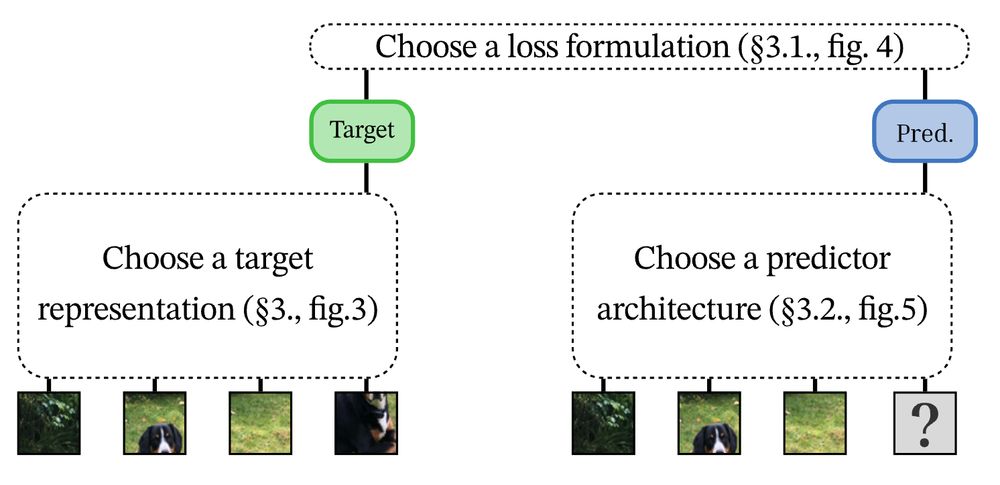
Let’s dissect a bit the anatomy of a mask image model.
1. take an image, convert its patches to representations.
2. given part of this image, train a model to predict the content of the missing parts
3. measure a loss between pred and target
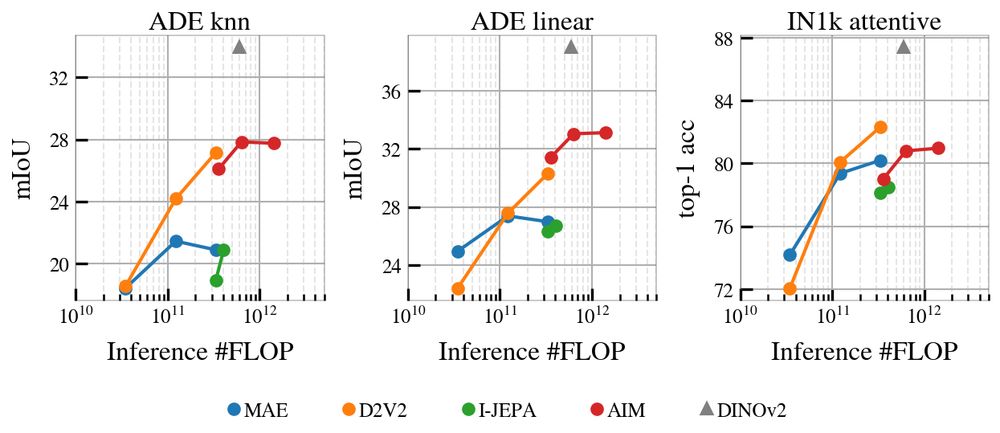
Language modeling solved NLP. So vision people have tried masked image modeling (MIM).
The issue? It’s hard. BeiT/MAE are not great for representations. iBOT works well, but is too unstable to train without DINO.
→Pure MIM lags behind DINOv2
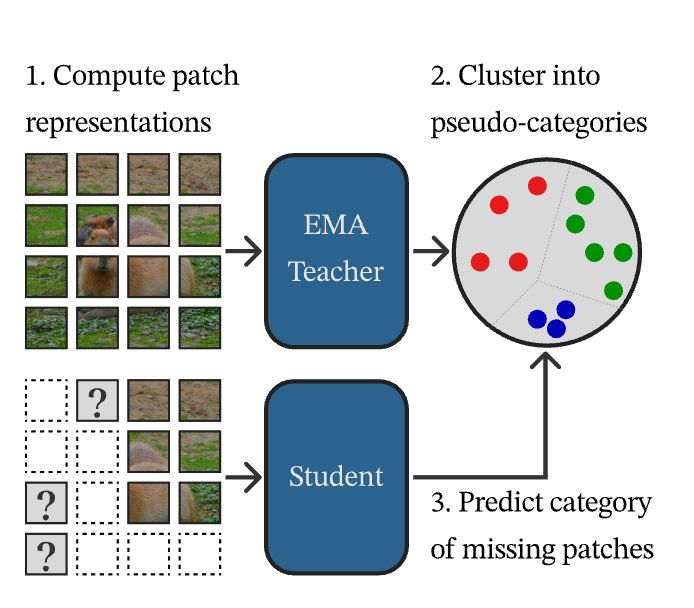
Want strong SSL, but not the complexity of DINOv2?
CAPI: Cluster and Predict Latents Patches for Improved Masked Image Modeling.
(3/3) LUDVIG uses a graph diffusion mechanism to refine 3D features, such as coarse segmentation masks, by leveraging 3D scene geometry and pairwise similarities induced by DINOv2.
31.01.2025 09:59 — 👍 12 🔁 1 💬 2 📌 0
Illustration of the inverse and forward rendering of 2D visual features produced by DINOv2.
(2/3) We propose a simple, parameter-free aggregation mechanism, based on alpha-weighted multi-view blending of 2D pixel features in the forward rendering process.
31.01.2025 09:59 — 👍 10 🔁 1 💬 1 📌 0(1/3) Happy to share LUDVIG: Learning-free Uplifting of 2D Visual features to Gaussian Splatting scenes, that uplifts visual features from models such as DINOv2 (left) & CLIP (mid) to 3DGS scenes. Joint work w. @dlarlus.bsky.social @jmairal.bsky.social
Webpage & code: juliettemarrie.github.io/ludvig

Outstanding Finalist 2: “DINOv2: Learning Robust Visual Features without Supervision," by Maxime Oquab, Timothée Darcet, Théo Moutakanni et al. 5/n openreview.net/forum?id=a68...
08.01.2025 17:41 — 👍 8 🔁 3 💬 2 📌 0
"Patterns fool ya" I guess
www.youtube.com/watch?v=NOCs...

Hash functions are really useful to uniquely encode stuff without collision huh
07.01.2025 14:15 — 👍 5 🔁 0 💬 1 📌 0
At least there's diversity of opinions
27.12.2024 18:56 — 👍 13 🔁 1 💬 1 📌 0